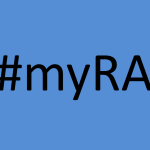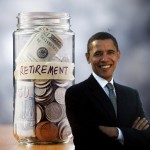 I’ve become a bit obsessed with public pensions this month.[1]
I’ve become a bit obsessed with public pensions this month.[1]
As a lesson in how pensions can go wrong, I began looking into the Dallas Police and Fire Pension System.
Dallas’ Police and Fire Pension ranks as the tenth largest in the state and easily qualifies as the most dire, according to the usual metrics of a public pension plan.
Public pensions can confound us through both mathematical as well as political complexity, but let me tell you in simplest terms the depths of the problems of the Dallas Police and Fire Pension System.
One measure of pension-plan financial health – the unfunded liability per member – marked the Dallas Police and Fire Pension system last year as the worst-funded pension in the entire state. “Unfunded liability per member” is a calculation of all the future payments owed to pensioners for past service, that isn’t covered by money in the plan, and then divided by the number of members in the plan. With a whopping $213,712 unfunded liability per member in 2015, Dallas’ pension is far worse than the next large-ish unfunded pension liability per member of $128,576, an unfortunate distinction claimed by the Houston Police Officer Pension Fund.[2]
But that was last year, and things have gotten a lot worse in Dallas.
Ten years ago, the fund reported an 89 percent “funded ratio” – which is a short-hand number for how much of future payouts are covered by invested assets. Healthy pension plans generally don’t have to have all future payments covered, but an 80 to 90 percent funded ratio range feels comfortable, and Dallas’ did.
After the departure of Executive Director Richard Tettamant in mid-2014, fund values in the pension began to drop precipitously. Sudden write-downs of the value of the real estate (31.7 percent) and private equity portfolios (20.2%) followed in 2015.
The FBI raided the offices of the fund’s real estate advisor CDK in April 2016. Meanwhile, the pension fund and CDK filed lawsuits against one another.
As Kelly Gottschalk, the Executive Director who took over in 2015 told me, “Everything that could go wrong with pensions has gone wrong with this pension.”
The funded ratio fell from 64 percent in 2014 to a recently updated 45 percent by mid-2016.
In simplest terms the 45 percent funded ratio means there’s only about half the money in the pension plan that there needs to be for retired police and firefighters.
The losses in investment assets form only part of the pension’s problem. An extremely generous retirement scheme begun in 1999 called a Deferred Retirement Option Plan (DROP) allowed officers of qualifying retirement age to continue to work full-time, while receiving guaranteed pension payments paid into a special account which earned a generous and guaranteed return. They essentially “double-dipped” on pension payments and salary. Some of these benefits are in the process of being rolled back, but the latest attempt to do so has resulted in further litigation. Naturally, nobody likes giving up a good employment deal that they’ve been promised.
How to solve a problem of this magnitude?
Gottschalk will present to the board this Thursday the years-long work of a subcommittee trying to puzzle this out. I don’t have a crystal ball into what she’ll propose, except we can guess the only available bailout methods are:
- Employees and the City of Dallas start putting in a lot more money every year
- The fund borrows more money
- Retirees get their benefits drastically cut
None of these will be fun for anyone. None of these will seem fair.
Up until now, Gottschalk says, the City of Dallas has always paid its full share to keep the fund on track financially.
To solve the hole now, she says, the pension is “roughly getting one half of what we need.”
And yet as Dallas City Councilman Philip Kingston, who sits on the pension’s board, told me, “that is politically an extremely difficult argument to sell. That’s going to go over like a lead balloon. I have consistently told my colleagues on the [Pension] board not to expect much.”
Ironically, within a month of being tragically reminded in Dallas of the dangers of being a uniformed officer, we’re about to see their financial bargain get a lot worse, one way or another.
Now, if you’re neither a police nor fire retiree, nor a Dallas taxpayer, why should you really care about Dallas’ failed pension plan? What’s the big deal?
Just this, in two steps. First, their public pension catastrophe could happen in your city or state. Next, if it does happen, taxpayers – one way or another – pick up the tab.
Public finance conundrum
Here’s the start of the classic problem that makes public pension-planning a nightmare, almost inevitably: Decisions made in any year – most importantly the bad decisions – don’t tend to show up as grievous errors until many years or possibly decades later. Fiscally prudent decisions, conversely, take years to “fix” pensions. Meanwhile, there’s a political negotiation going on today, naturally, in setting pension terms for public employees.
Dallas’ situation on the investment side was an unfortunate self-inflicted wound, but I think their broader struggles are symptomatic and shared by many public pensions.
Police, fire, teachers, municipal, and county employees want good benefits in their retirement. In fact, they rightly deserve strong consideration from political leaders as well as from taxpayers. I start with the view that they are all highly deserving of a comfortable retirement.
And yet, small decisions about how generous to be can compound into massive fiscal headaches in future years, long after most political office-holders have left their job. Small errors – or in the case of Dallas, large errors – in investment management can also compound into public liability nightmares over the years.
A few brave political leaders may understand the long-run problem, but they will be pulled in difficult directions by their constituents. Yes, leaders report to taxpayers generally, but specific pensioners can be awfully persuasive right now, this year, with their retirements at stake. Pension beneficiaries don’t have the big picture necessarily in mind, and they are hard to resist.
Ticking financial time-bombs
As a result, public pensions resemble little financial bombs planted underneath our local governments. A few people know they’re there – hidden, ticking – waiting. Pension plan actuaries – the math nerds hammering away like underground gnomes running their sophisticated models – know what’s buried underneath the public square. But who’s really listening to the tapping and ticking?
So these public pensions bombs wait until probably the worst possible moment in the city or state to suddenly rip a hole in our public finances.
This danger inherent in public pensions has no permanent fix. I’m just pointing out that eternal vigilance is not only the price of liberty but also a necessary component of public pensions. So do you want to join my little obsession and work to understand this stuff?
I plan to write a “pension explainer” in a follow-up post so you can know what to look for.
A version of this post ran in the San Antonio Express News.
Please sell related posts:
Public Pension Heuristics – An Explainer
The Impending Houston Pension Problem
[1] I know, I know, I need better hobbies, and I can’t seem to care enough about Pokemon Go to get past Level Five. And seriously, you guys, public pensions are arguably as important to our future as finding Pikachu. Maybe more?
[2] To look up the data on public pensions in Texas, check out the useful Texas Transparency site.
Post read (308) times.








